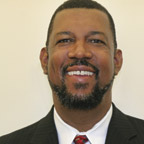Post-Recession Workforce Challenges

As our economy continues to recover from the recent recession, several workforce challenges await us over the next few years. The first and most obvious challenge is growing our economy and replacing the millions of jobs that have been lost over the last two years. However, this may take some time. Some economists predict that it may take at least one—and possibly up to three—years before the economy adds back the millions of jobs recently lost. The unseen workforce consequence, however, is that the jobs returning will not necessarily be the same ones lost. As our economy continues to evolve, the constant theme is that certain manufacturing jobs continue to migrate and diminish while other sectors of the economy continue to expand.
There are several other long-term trends that will continue to impact our economy. These include: 1) demographic trends of possible worker shortages in key economic growth sectors; 2) the changing nature of work and increasing need for more workers with higher skill sets; 3) lagging educational attainment for entrant workers; and 4) the mismatch between the skill set of the workforce and skills needed in key economic growth sectors.
Demographic trends indicate that over the next 20 years, about 78 million baby boomers will reach retirement age and will eventually be transitioning out of the workforce. This translates into about 10,000 workers each day. They will be replaced by only 46 million “Generation X and Yers,” leaving a potential shortfall of over 30 million workers. While recent surveys of U.S. workers indicate that about 44 percent of these workers may postpone retirement by at least three years, the demographic die has been cast and the certainty of worker shortages will eventually catch up with us.
Our economy continues to change. A recent report from the American Society for Training and Development (ASTD) entitled Bridging the Skills Gap cites the following data:
In 1991, fewer than 50 percent of U.S. jobs required skilled workers. By 2015, 76 percent of U.S. jobs will require highly-skilled workers, e.g. those with special skills in science, technology, engineering, or math. And 60 percent of new jobs will require skills held by 20 percent of the population.
The Institute of Medicine notes that as the first of the nation’s 78 million baby boomers reach 65 in 2011 the health workforce will be too small and unprepared to meet their specific health needs…
The healthcare industry is the most obvious example of predicted shortages in key economic sectors. In central Illinois, projected economic growth sectors over the next 10 years will include: healthcare; education and community services; advanced manufacturing, engineering and information technology; transportation, warehousing and logistics; and construction, installation and repair. Job openings occurring in these sectors will be due both to retirements of an aging workforce and some economic growth. In addition, future jobs in these and other sectors will also be impacted by new technologies in the emerging fields of nanotechnology, biotechnology, robotics and major advances in genetics and information technology.
The resulting new jobs will require more education and skills that may not match the skill sets of our current or emerging workforce. In our future articles, we will discuss strategies to meet these emerging challenges in central Illinois. iBi

